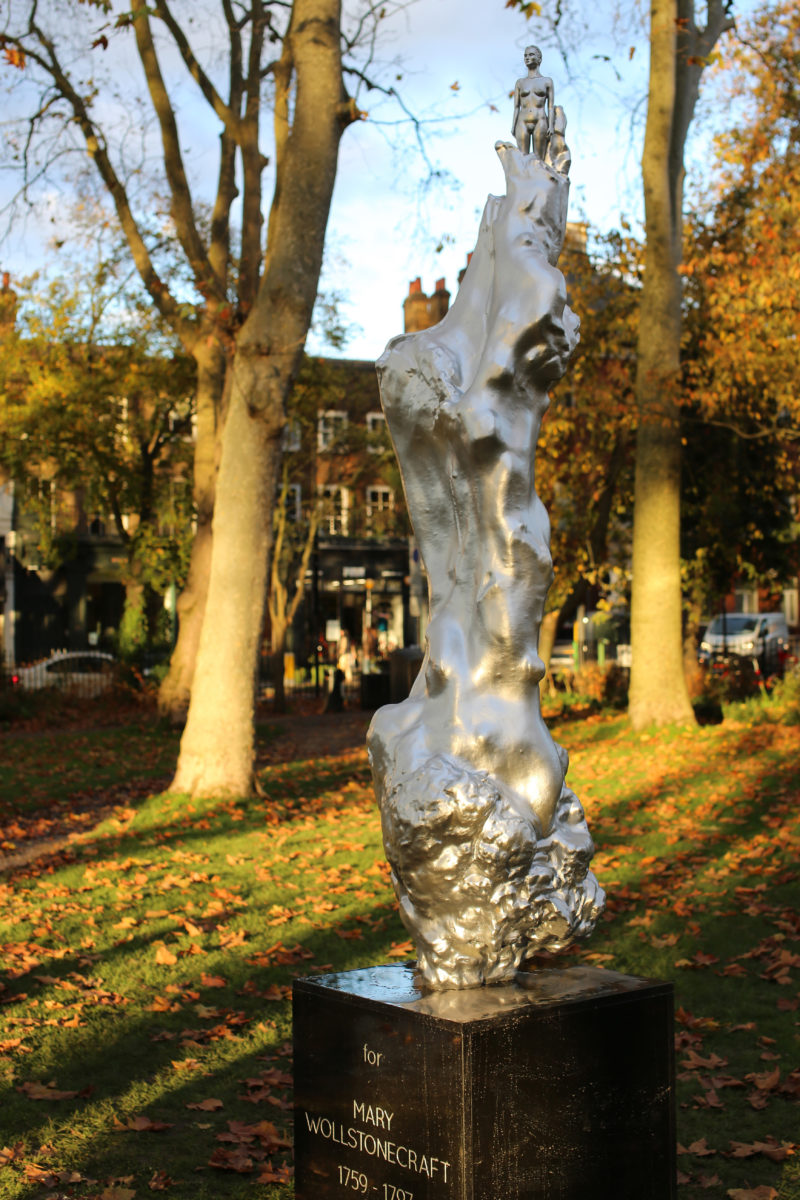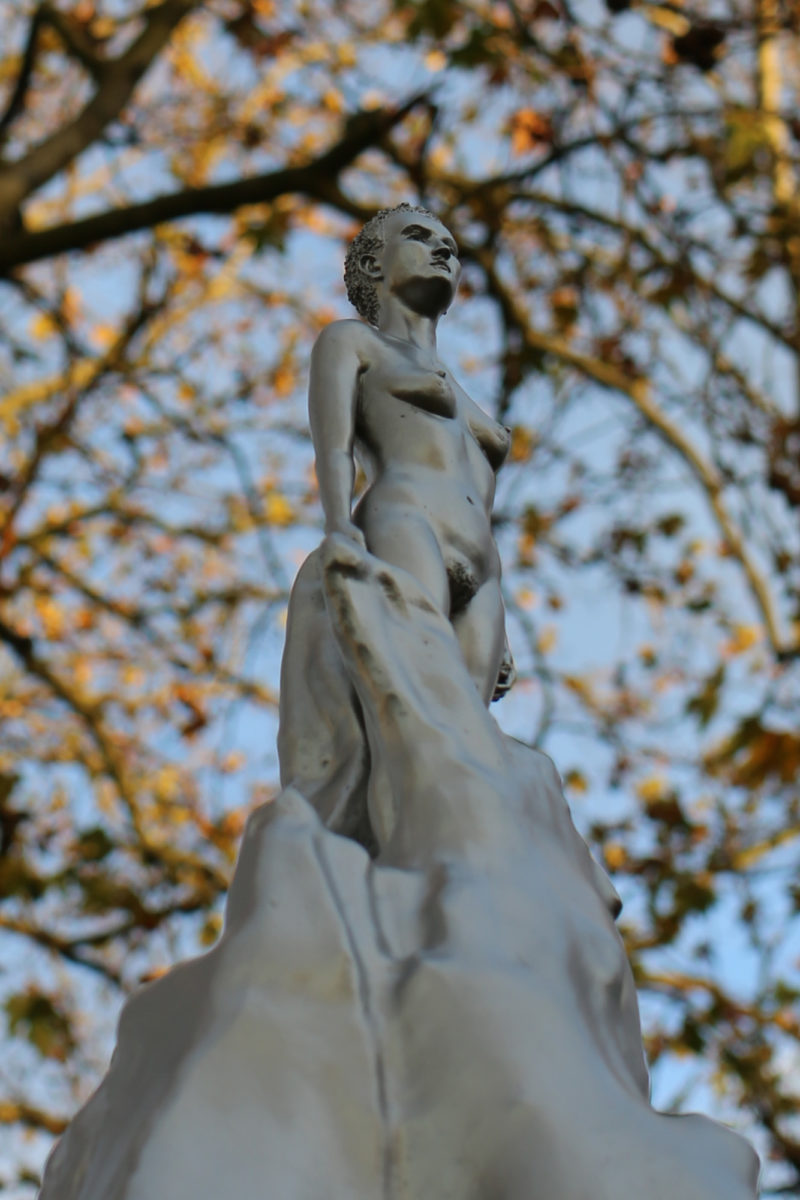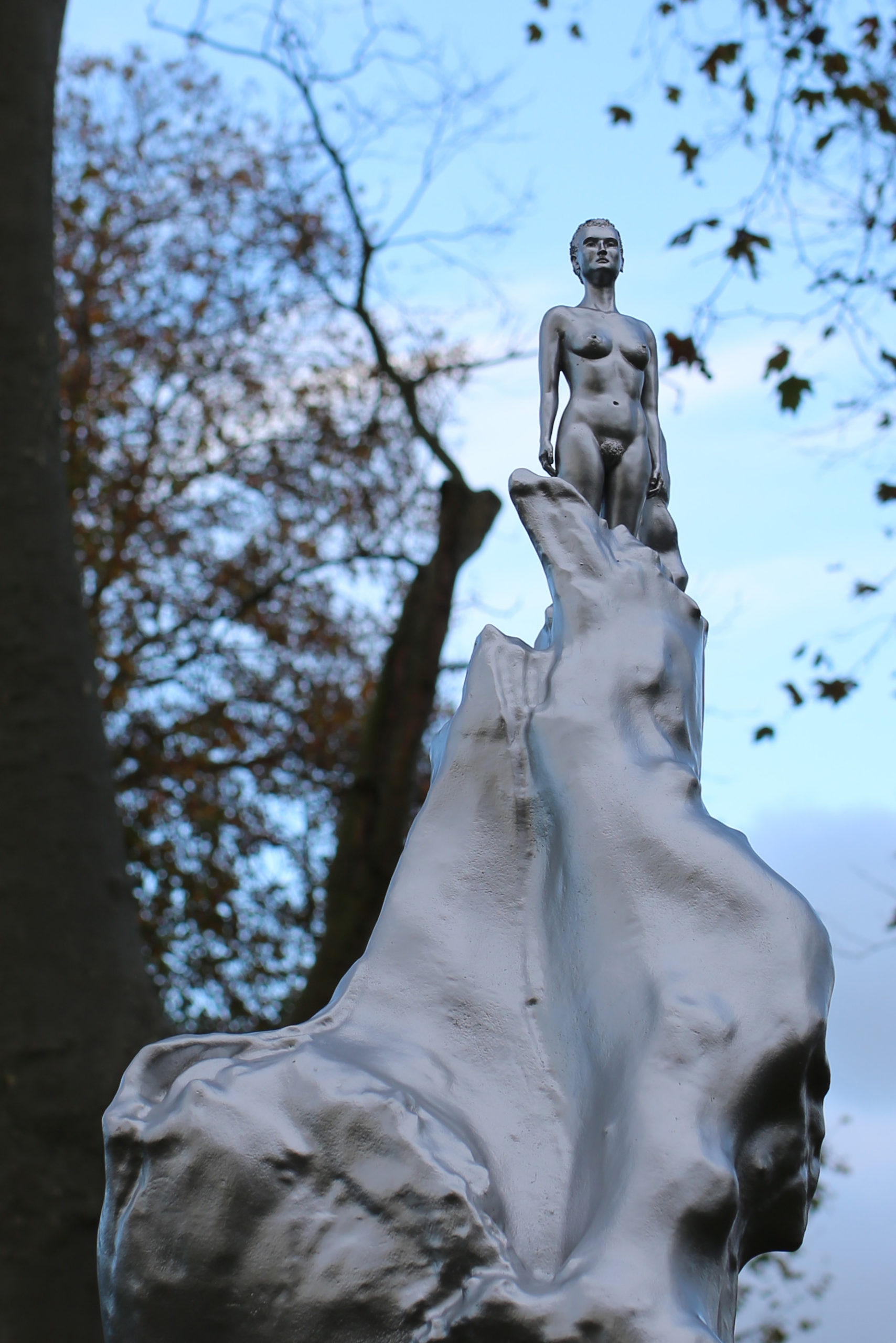
When I first saw the sculpture commemorating the feminist thinker Mary Wollstonecraft—unveiled this week in North London, where she lived and worked—I thought it was a joke. I’ve been working on a long-term project about the female nude, but the last thing I expected was to see a naked woman represented, especially not one that draws the eye so magnetically towards the subject’s pubes. “Thanks I hate it???” the novelist Imogen Hermes Gowar tweeted alongside a photo of the nude “everywoman” emerging from a gristly amorphous silver blob, intended to represent, possibly, the spirit of Wollstonecraft, amniotic fluid, primordial goo, or, as one spectator suggested, a fatty leg of ham.
And Gowar is not alone in her dislike. Would the author of A Vindication of the Rights of Woman, who was subjected to sustained misogynist attacks, feel vindicated by this? I think I can say with complete confidence that she would not. The problems with Maggi Hambling’s sculpture are manifold. “Why is she so small and naked?” social media users are asking, but the naked lady is not, we are told by the artist, intended to represent Wollstonecraft. Instead, she is a “spirit” or “everywoman”—although local parents crowded around the statue at its unveiling could be overheard definitively informing their children: “That’s Mary!”
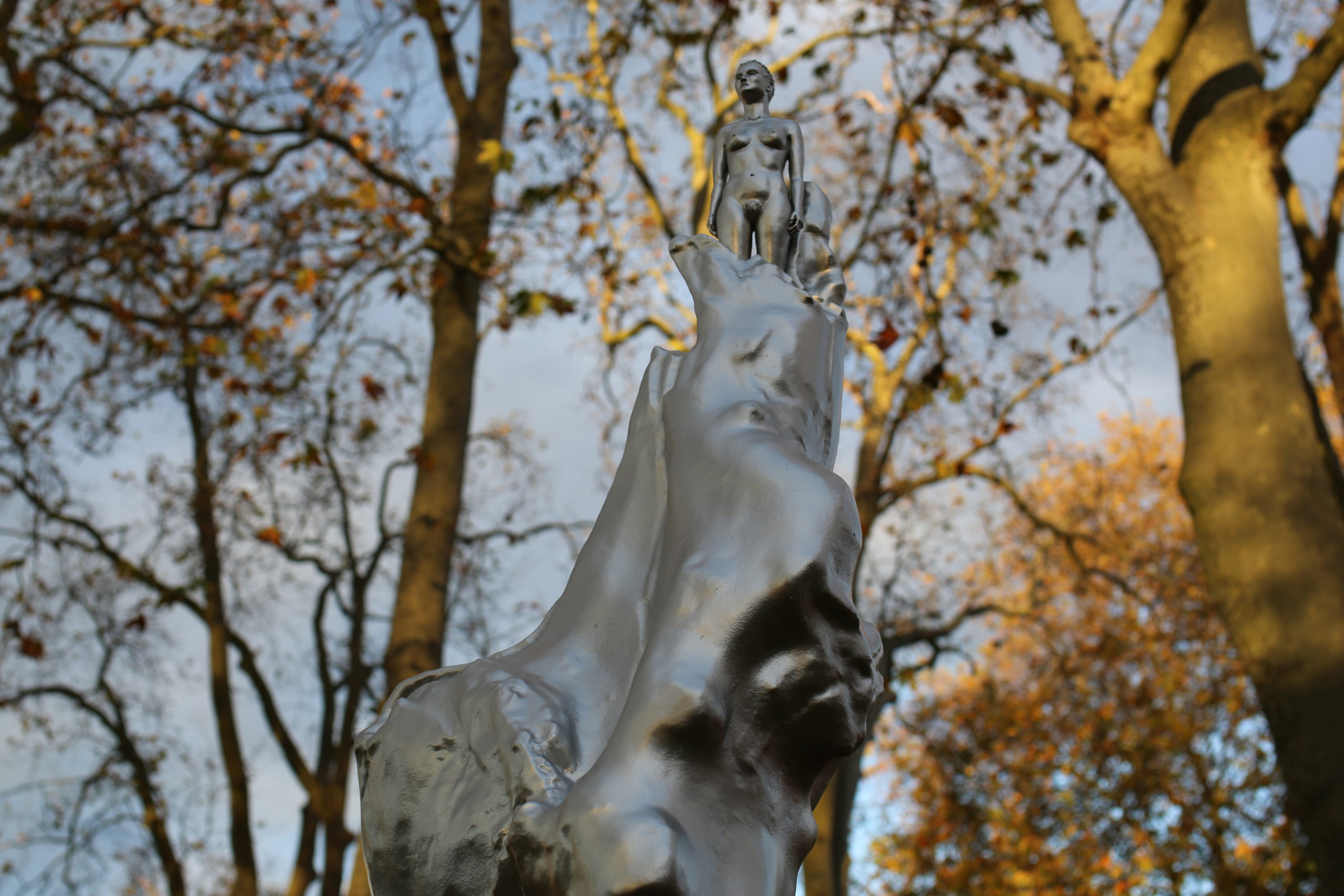
Like many of the countless female nudes that have come before it, the spirit is conventionally proportioned: slim, toned, Caucasian in feature: she is as much of an everywoman as the idealised nudes and nameless nymphs that male artists have been producing for hundreds of years. Alberti, for example, had a formula for the perfect female body, originating in the classical myth of Zeuxis: the painter who could not find a single woman beautiful enough to depict Venus, and so chose all the best bits of the women of Croton to create an image of femininity that was “perfection.”
“It is intended to represent, possibly, the spirit of Wollstonecraft, amniotic fluid, primordial goo, or, as one spectator suggested, a fatty leg of ham”
This is why some of us feel so uninspired by the many insipid nudes that hang in Western museums, which we are told are great art, and which often seem to convey little emotion or vividness. We are told these are the pinnacle of great art—and there are great nudes, to be sure—but they are outnumbered by mediocre depictions which feel hollow and impersonal. The Wollstonecroft sculpture is an echo of those works, a missed opportunity to honour a towering intellect, reducing her instead to an objectified nothing, a creatively barren cipher who has little, if anything to say about the condition of women past or present. As a piece of public art, I find it singularly depressing. As a piece intended to honour the mother of feminism, I find it an outrage.
I have been plugged into the campaign for a statue honouring Wollstonecraft since its early days. On the wall around my desk are tacked a number of postcards that I find inspiring to look at while I work – the head of a goddess with her bronze eyes leaking, possibly Aphrodite, from the Acropolis museum; Tracey Emin’s I’ve Got it All from the Hayward; and the figure of Mary Wollstonecraft, designed by an artist, Stewy, to promote the “Mary on the Green” campaign. The image has been up on my wall for about seven years (the campaign has been running for almost ten), and now I feel like taking it down.
Note the wording: Mary on the Green. Not “naked woman on the green.” Mary. Who believed so fiercely in the rights of women. Anyone familiar with a cursory history of the female nude knows how, over the centuries, this imagery has limited and constrained women. As Lynda Nead wrote in her classic work The Female Nude: Art, Obscenity and Sexuality, “the formless matter of the female body has to be contained within boundaries, conventions, and poses.”
Female and non-binary artists, from Artemisia Gentileschi and Paula Modersohn-Becker to Ana Mendieta, Tracey Emin and Zanele Muholi, have fought to break away from these conventions. Over the course of centuries, they have redefined the depiction of the naked female body in art. That we should be given such a conventional nude representation as a memorial to a woman known primarily for her colossal mind, and from a female artist too, feels like an act of betrayal.
“The Wollstonecroft sculpture is a missed opportunity to honour a towering intellect, reducing her instead to an objectified nothing”
“I think Maggi stands the test of time. People do catch up in the end”, Bee Rowlatt told the Guardian. But there is nothing to catch up with: art history shows us that this depiction is retrograde, offering us very little in terms of innovation, and, while its semi-abstract lower half implies an attempt to break ground, the upper is as conventional as it gets.
That is not to say that a nude depiction of a woman is always problematic or antifeminist. It isn’t. But it will always be political, and within a context where there are already so few statues of named women in the UK—just one in five, according to The Public Monuments and Sculpture Association (PMSA)—that Mary’s tribute doesn’t represent her, but a nameless and naked woman, only adds insult to injury. Even more so, when you consider that of the 828 statues the PMSA recorded, 174 of them were female; removing all the nameless female figures whittles the figure down to a mere 80 nationwide.
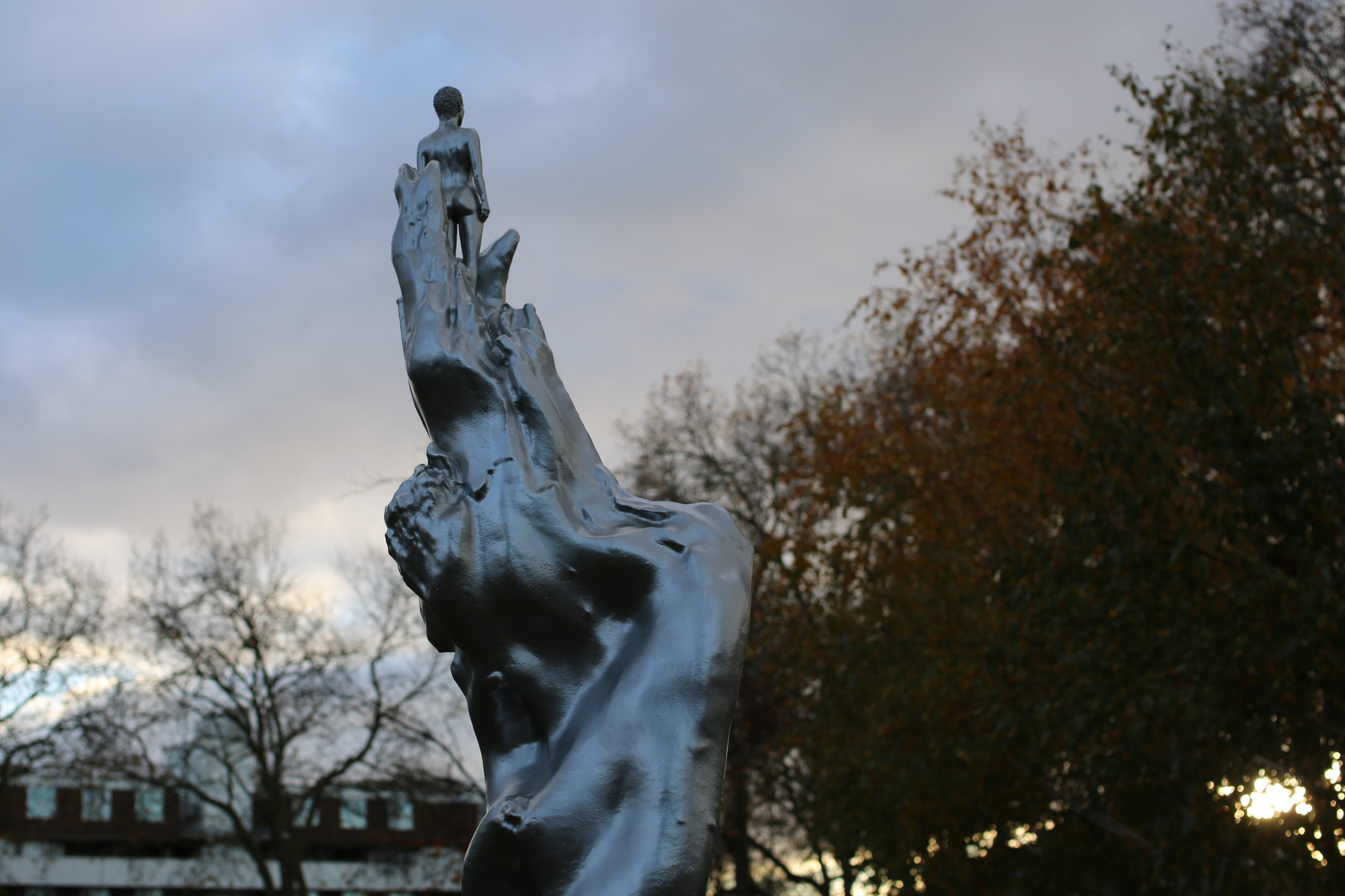
Imagine a statue paying tribute to Shakespeare, or Marx, consisting of a naked man with his dick out. It is simply unthinkable, and exposes the rank double standard that exists in terms of female representation. Furthermore, Hambling’s excuse that putting the “everywoman” figure in clothes would have made her look as though she “belonged to history” is a poor one.
“Anyone familiar with a cursory history of the female nude knows how, over the centuries, this imagery has limited and constrained women”
It is 200 years that Wollstonecroft has gone without a public statue (there is, it has been noted, a stone in St Pancras gardens and a bronze bust in the meeting house at Newington Green, created by Jenny Littlewood and with a twin at the Royal Society of Arts. The bust is mercifully, clothed), which makes all this even sadder. The fact that it was created by a female artist should not preclude it from criticism, either, though I imagine the campaigners who chose it suspected it might enrage and disappoint, and have tried to deflect it by noting that art by women attracts more criticism than art by men.
This is true, but last summer’s furore over Marc Quinn’s temporary statue of Jen Reid in Bristol shows that people feel especially strongly about works of public art (Charlotte Jansen wrote at the time that it represented “the glibness of contemporary culture and its vacant, self-serving gestures”) regardless of the artist’s gender. And we have hardly achieved equality if we feel unable to accuse women of making bad art as we can men.
All images © Louise Benson for Elephant
